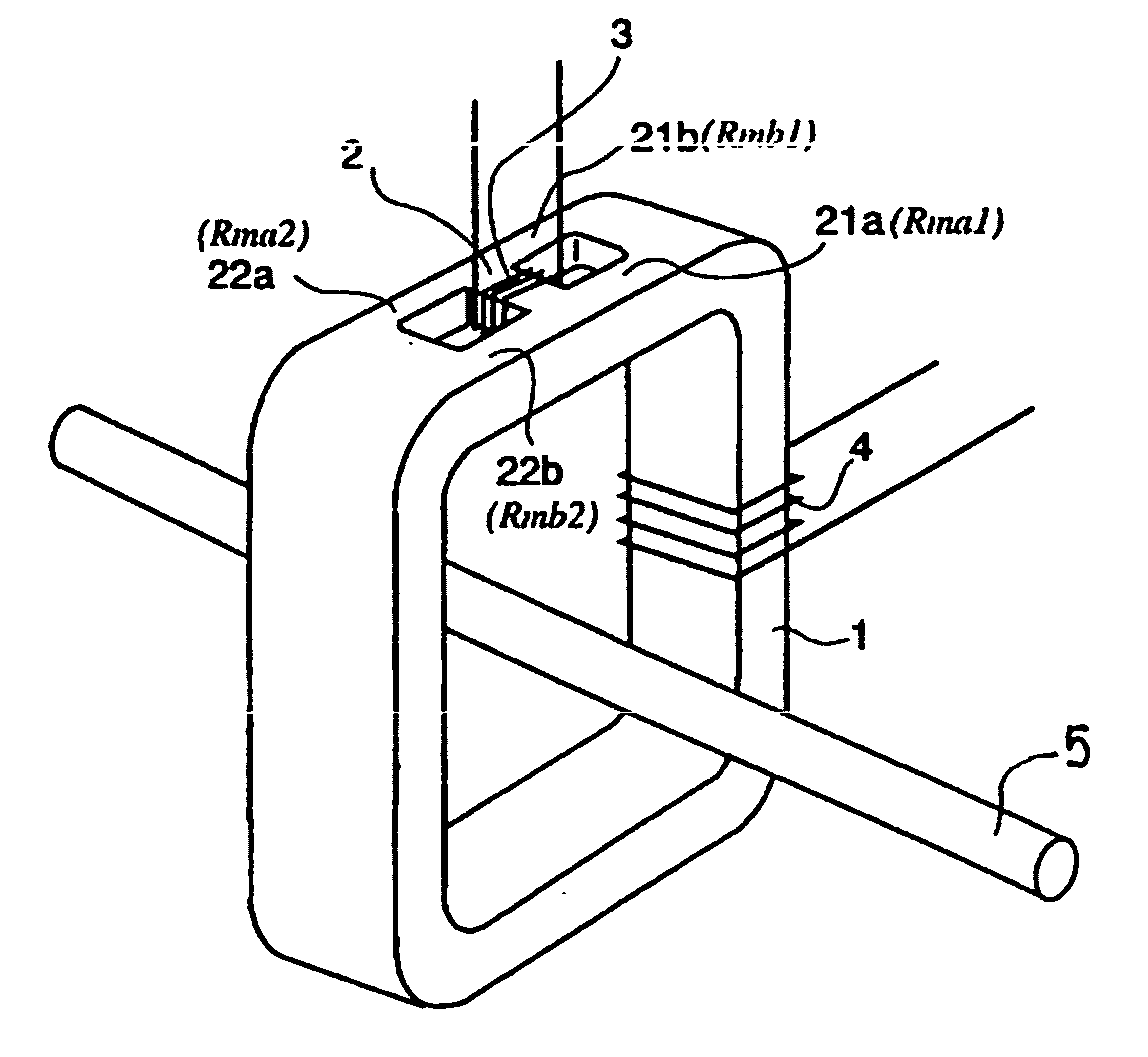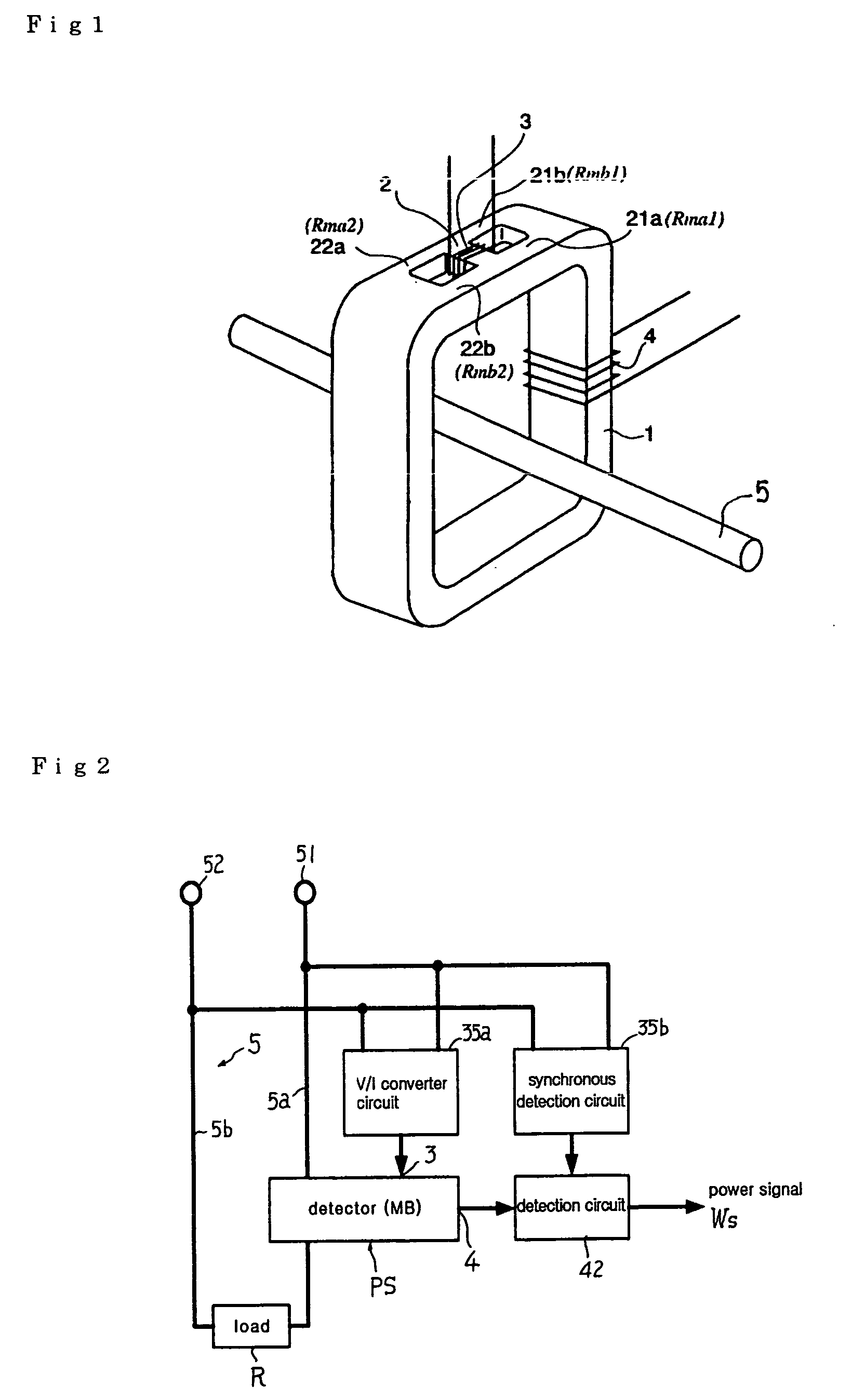Magnetic bridge electric power sensor
a technology of power sensor and magnetic bridge, which is applied in the direction of power measurement by galvanomagnetic effect devices, measurement devices, instruments, etc., can solve the problems of difficult integration of this power meter into a recently required automated apparatus, inability to simply calculate the power using ac power supply, and inability to measure direct-current power, etc., to achieve high sensitivity and high accuracy
- Summary
- Abstract
- Description
- Claims
- Application Information
AI Technical Summary
Benefits of technology
Problems solved by technology
Method used
Image
Examples
Embodiment Construction
[0074] Referring to FIG. 6, a power sensor in which inverting method is adapted to a modulation excitation current will be described.
[0075] In FIG. 6, reference numeral5 denotes a measurement target power line. The power line 5 includes detection target current conductors 5a and 5b to which a detector PS using a magnetic bridge (MB) is attached, and load R is connected to power receiving terminals thereof. Reference numerals 51 and 52 denote power transmission terminals of the power line 5. Reference numeral 3 denotes an excitation coil provided in a core of the detector PS. A current obtained by inverting a current of the power line 5 using a switching unit 31 is carried to the excitation coil 3. The switching unit 31 includes semiconductor switches, e.g., photo switches SW1 and SW2 as shown in FIG. 6. Alternatively, switches other than the semiconductor switches can be used. A current-limiting resistor 31R which operates voltage-current conversion is interposed between the power ...
PUM
 Login to View More
Login to View More Abstract
Description
Claims
Application Information
 Login to View More
Login to View More - R&D
- Intellectual Property
- Life Sciences
- Materials
- Tech Scout
- Unparalleled Data Quality
- Higher Quality Content
- 60% Fewer Hallucinations
Browse by: Latest US Patents, China's latest patents, Technical Efficacy Thesaurus, Application Domain, Technology Topic, Popular Technical Reports.
© 2025 PatSnap. All rights reserved.Legal|Privacy policy|Modern Slavery Act Transparency Statement|Sitemap|About US| Contact US: help@patsnap.com



